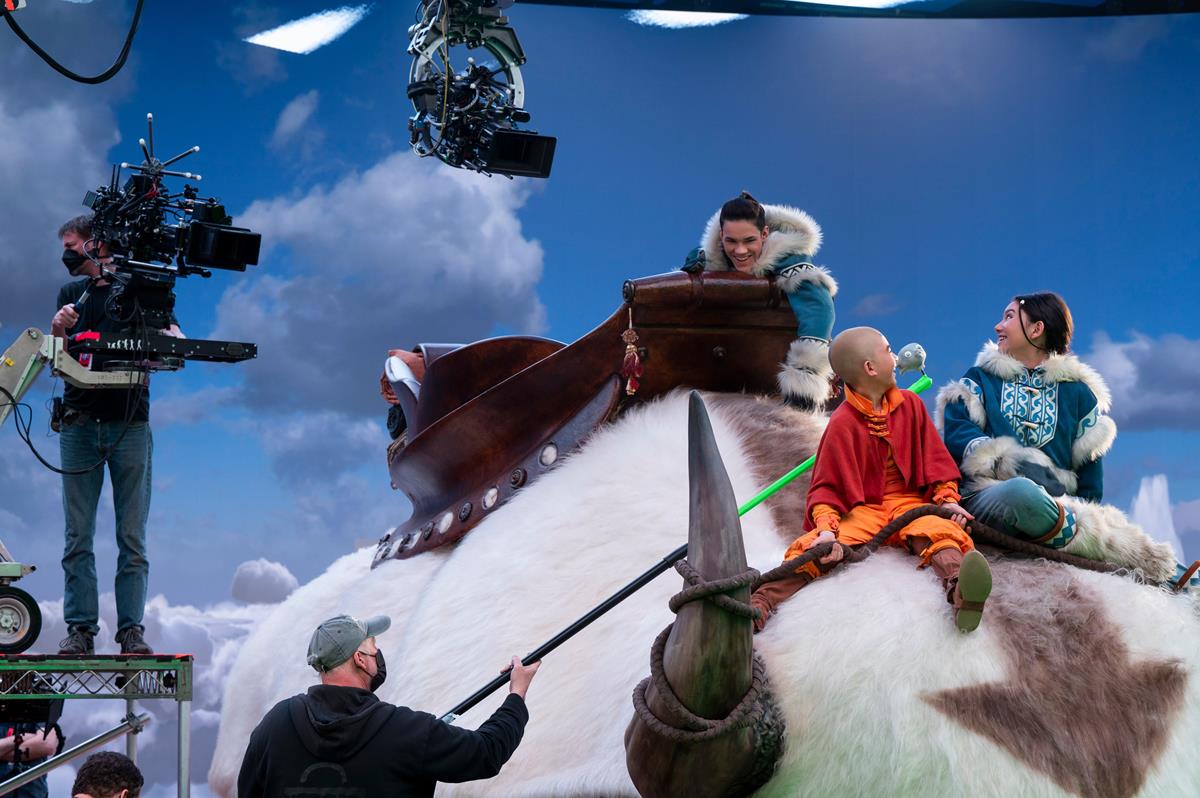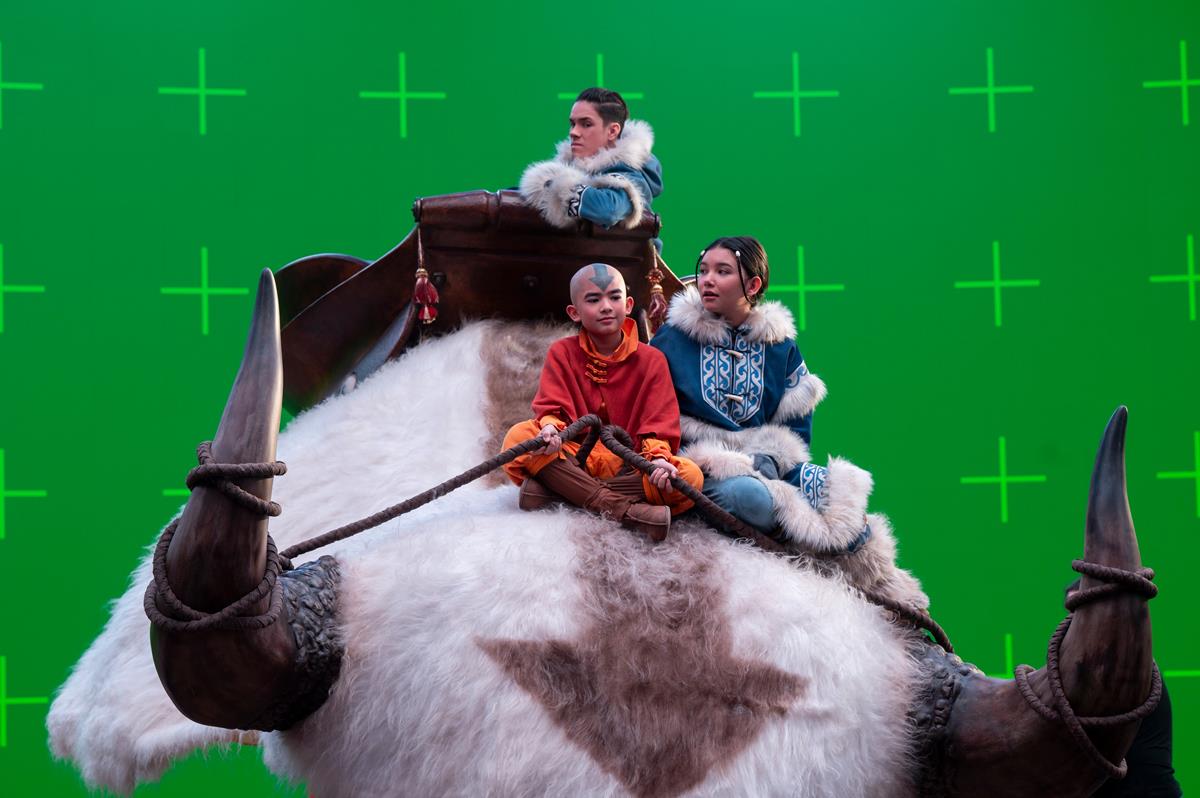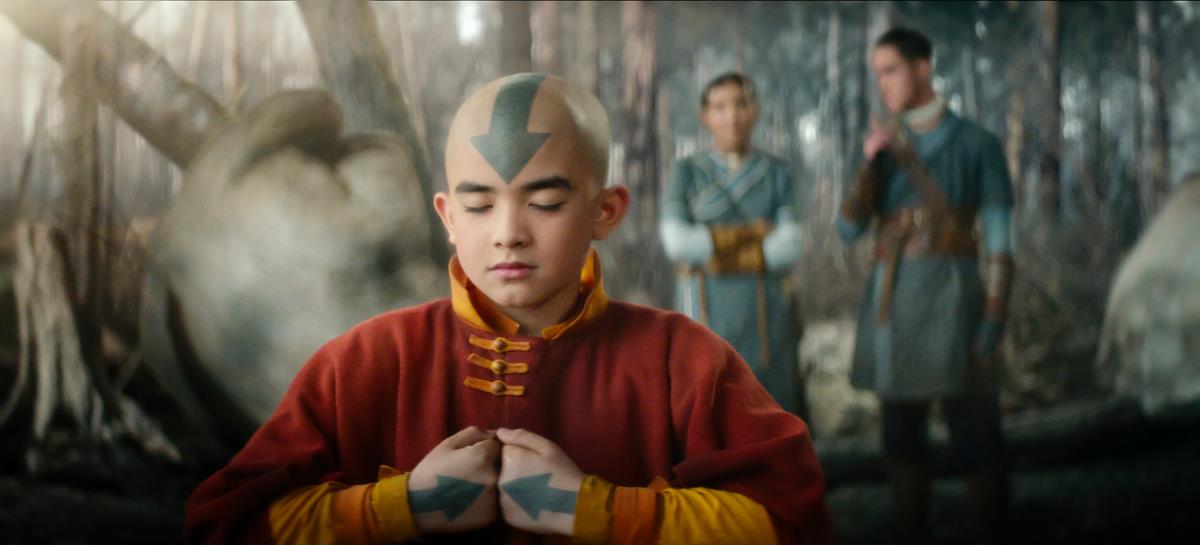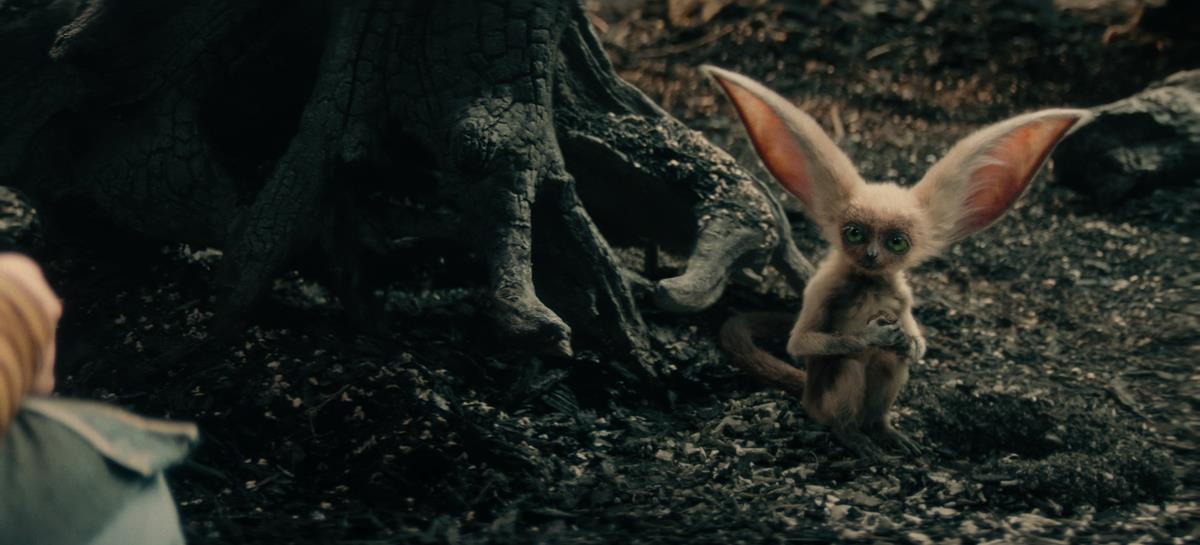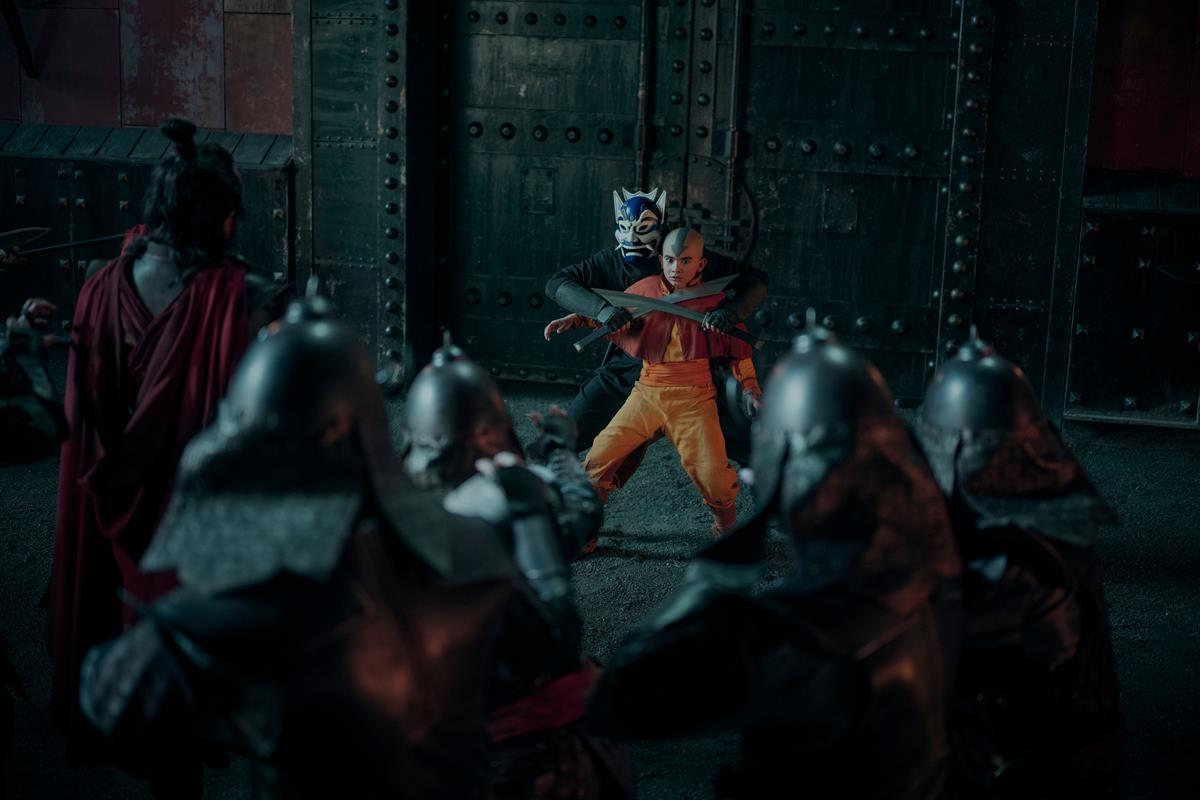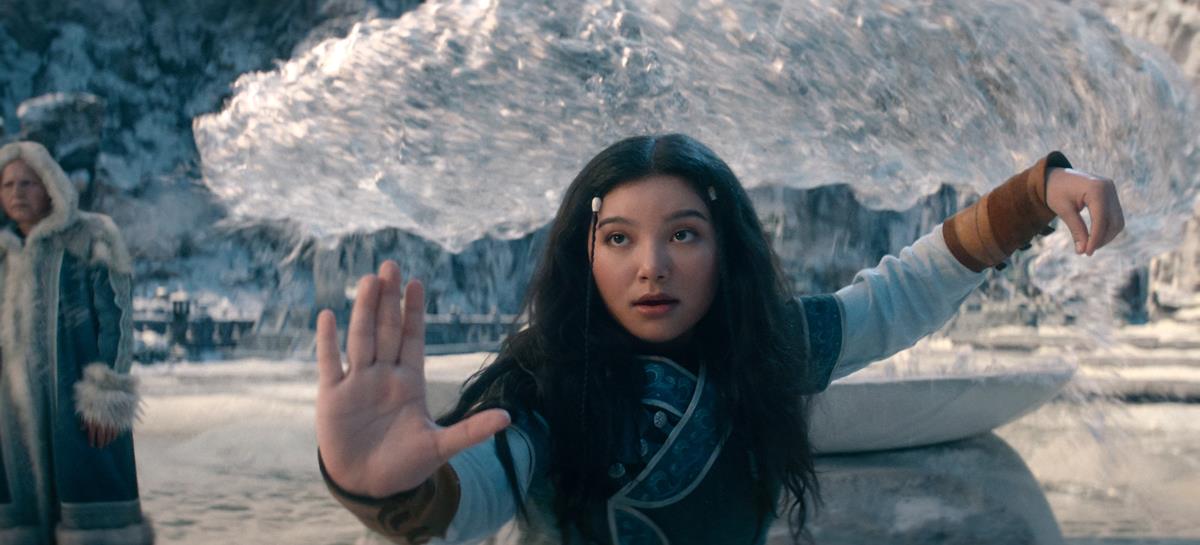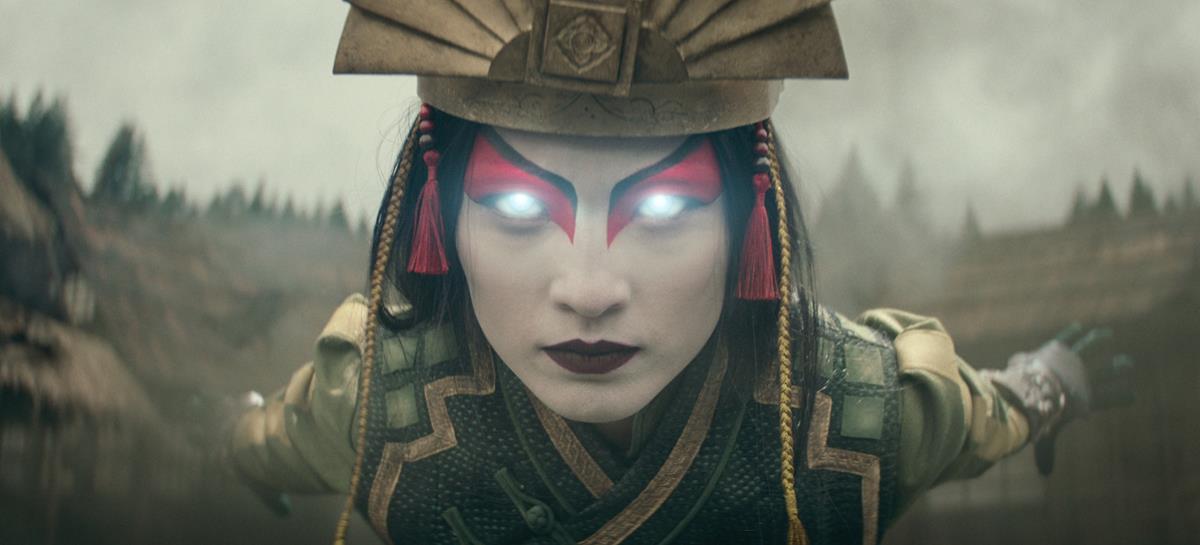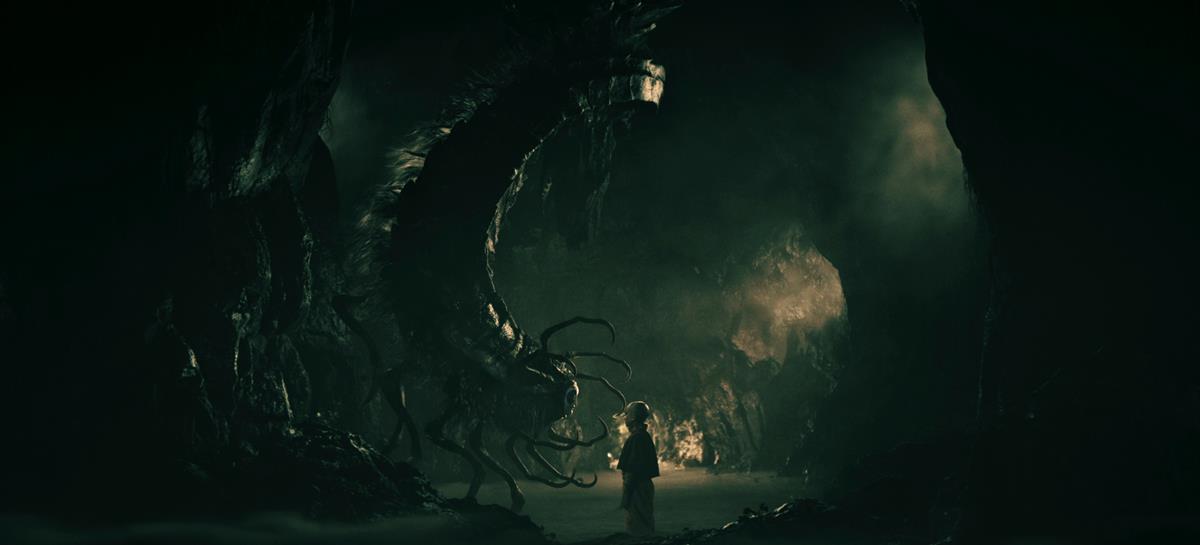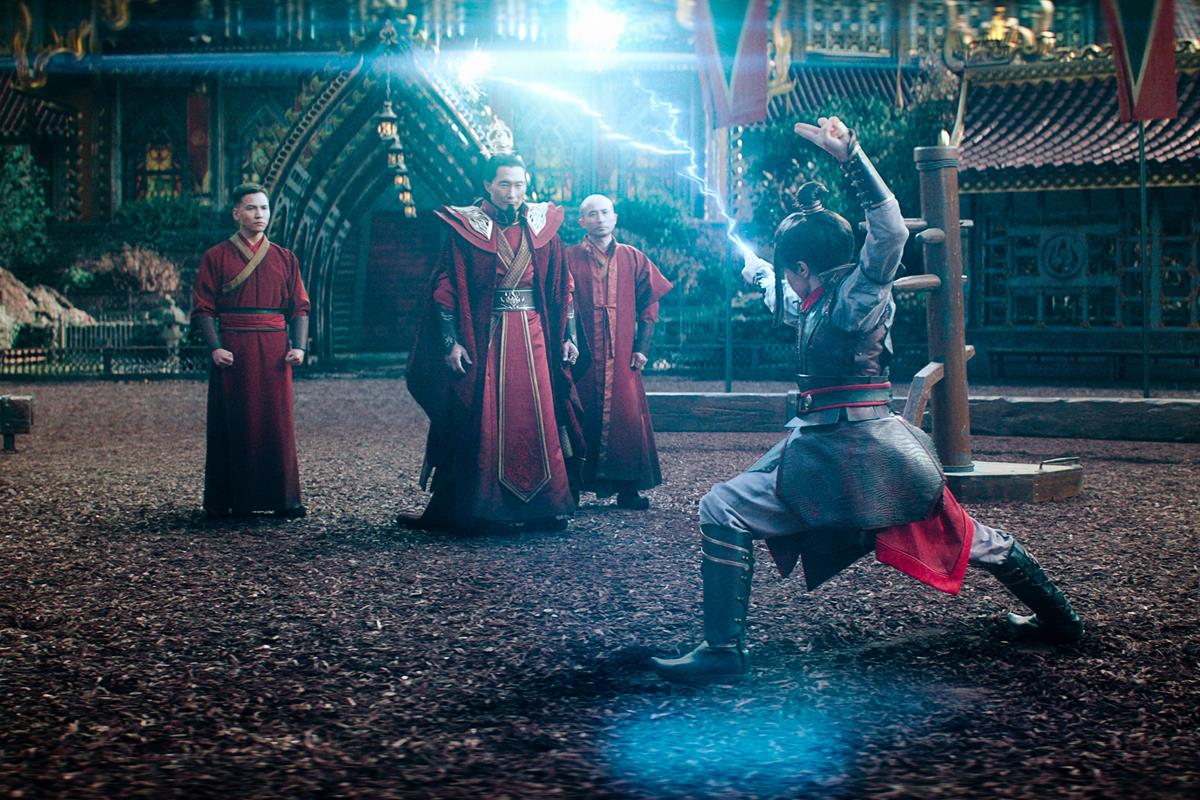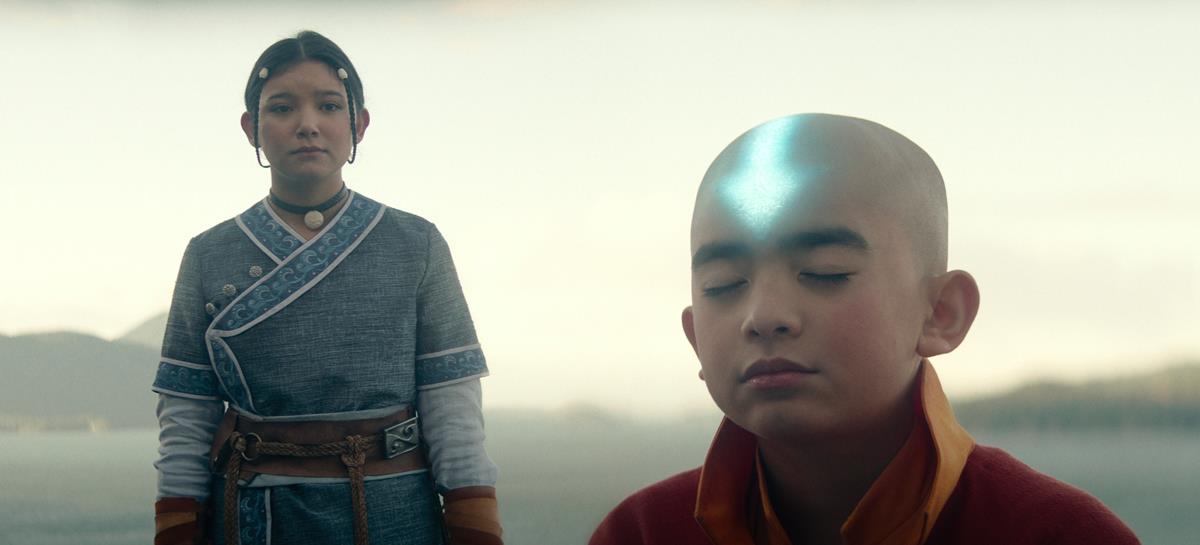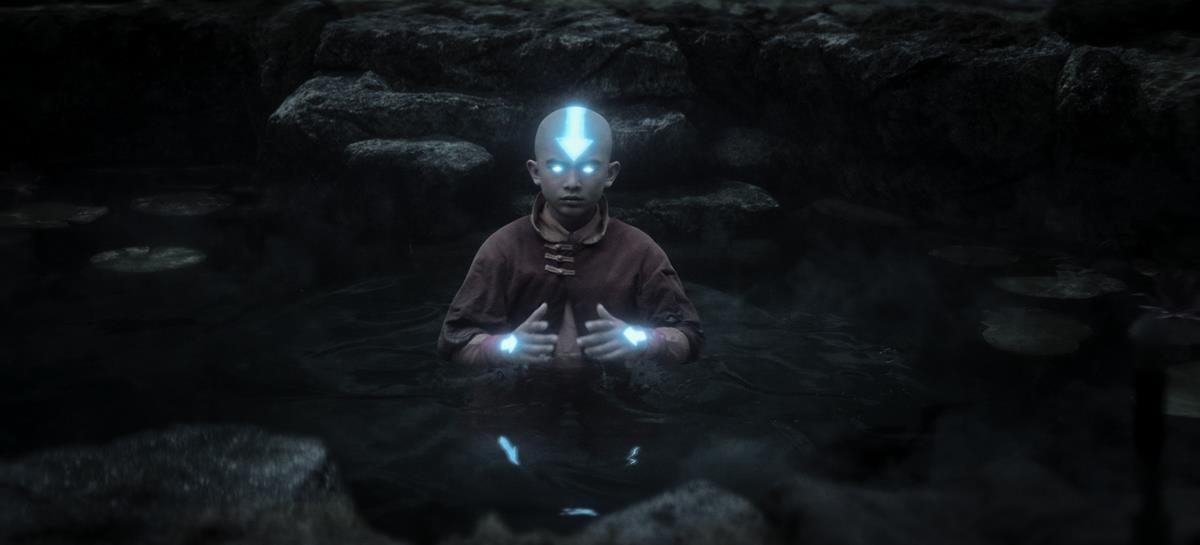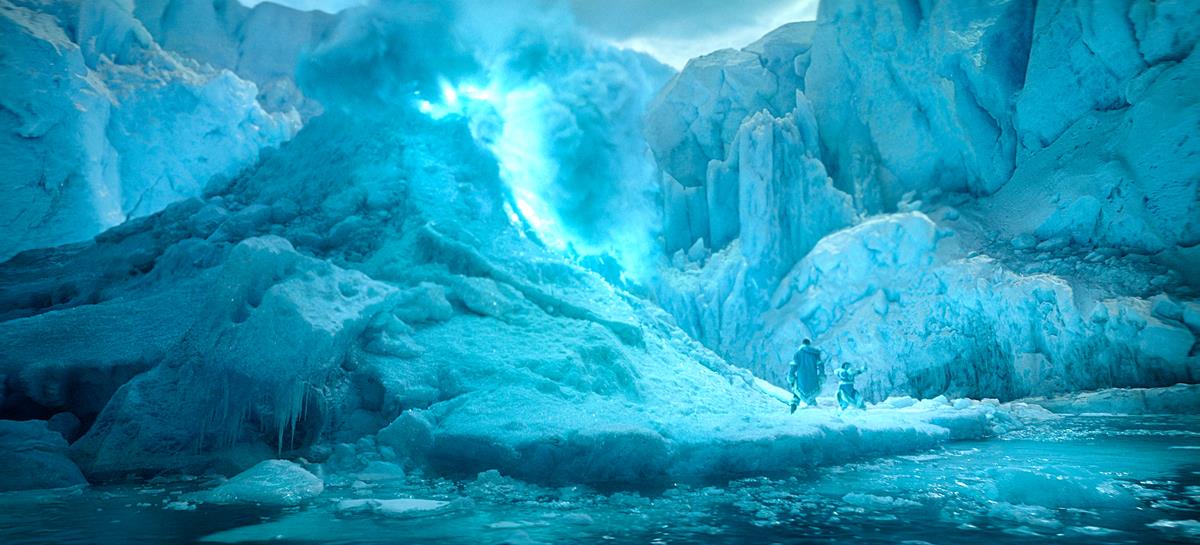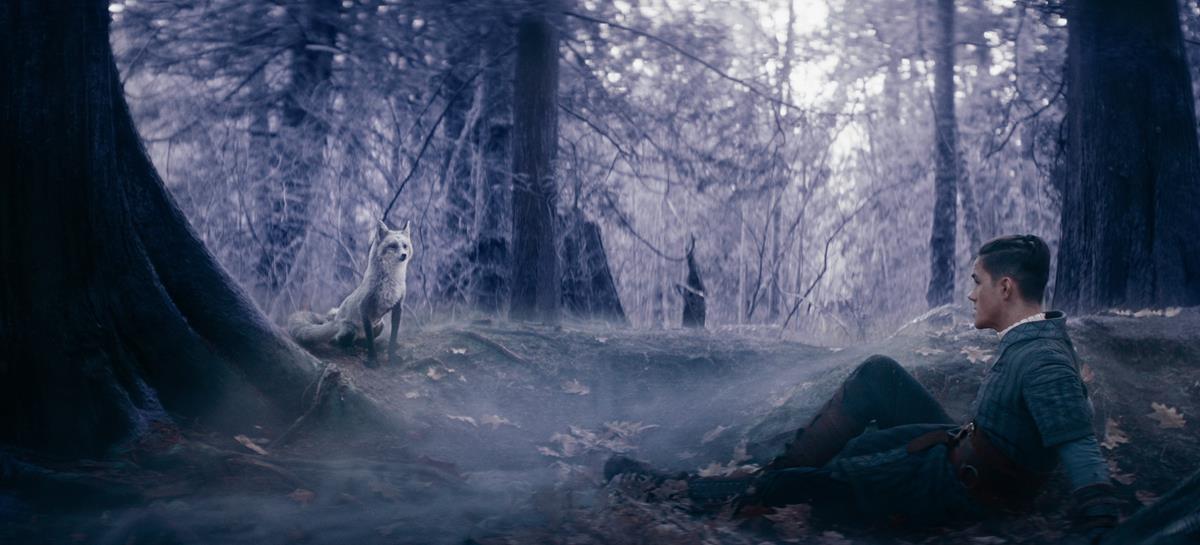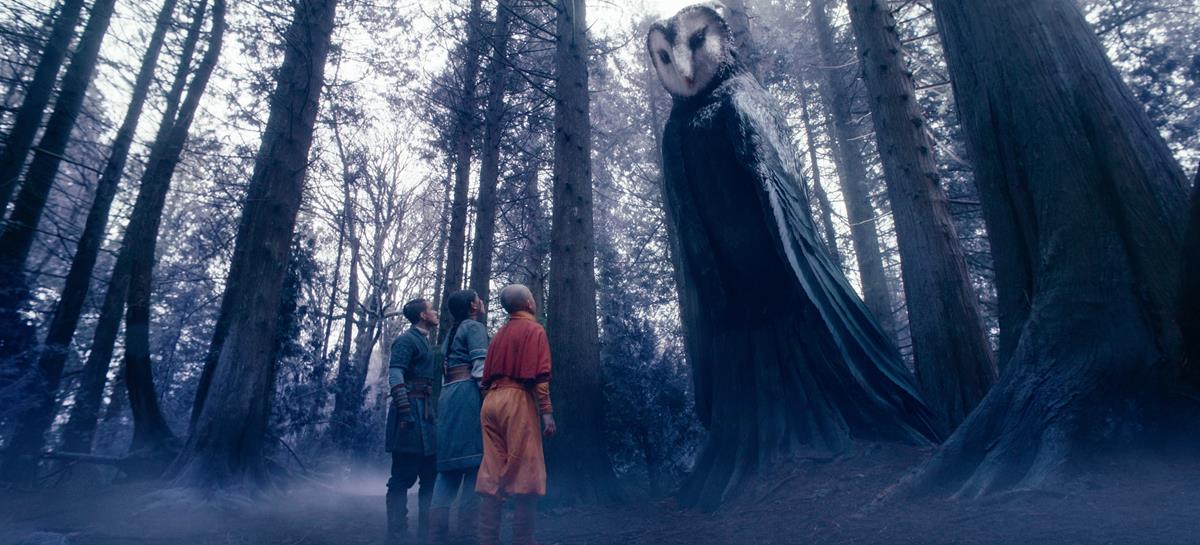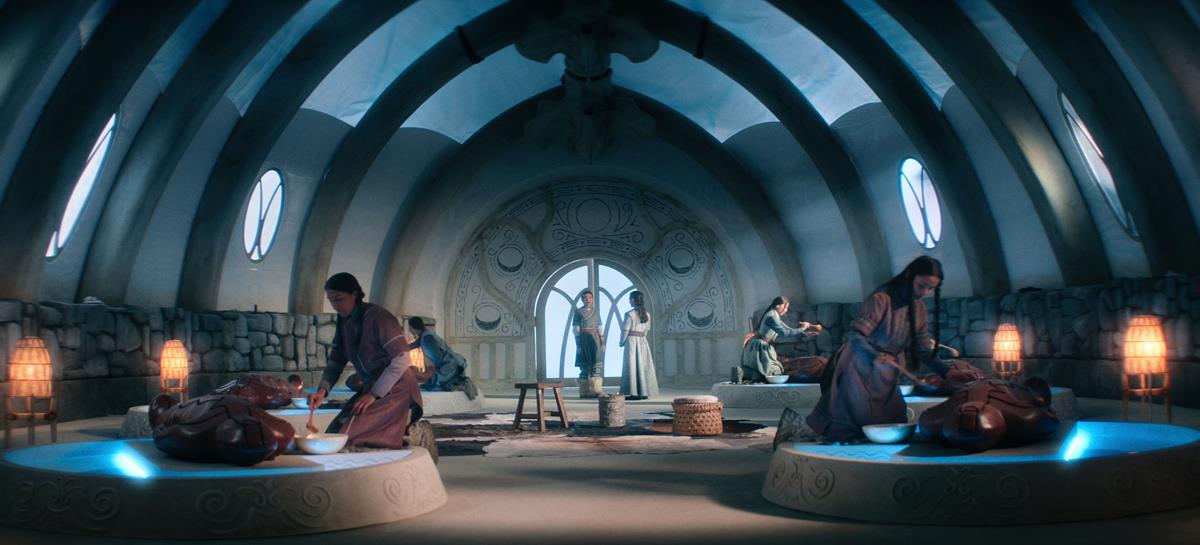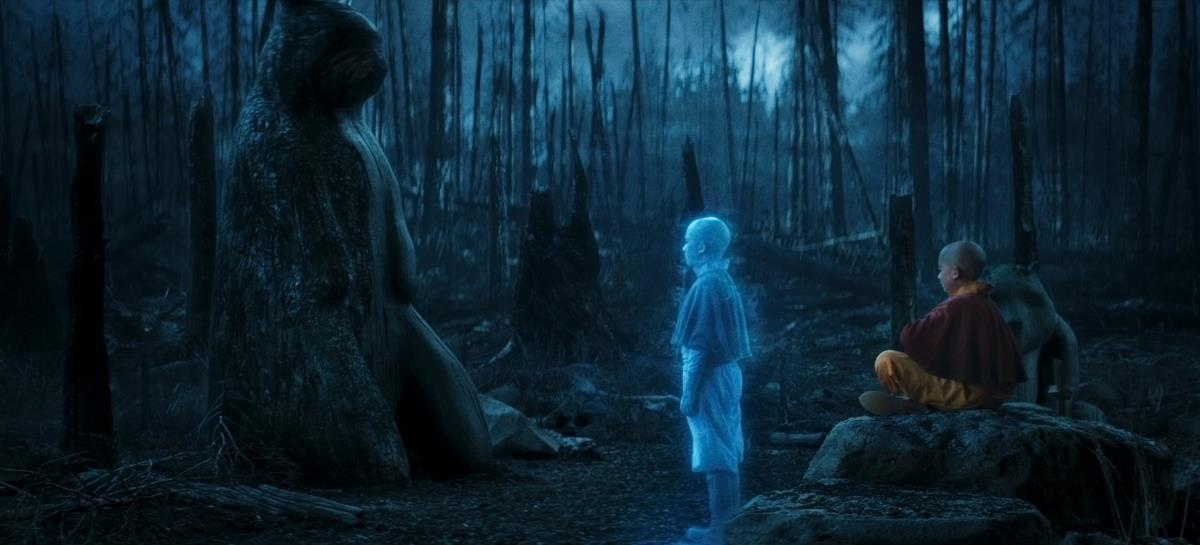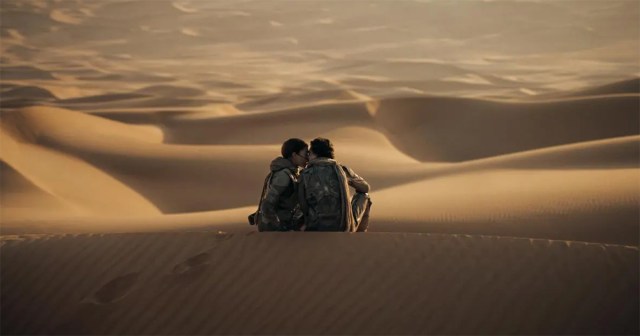
TL;DR
- VFX supervisors Jabbar Raisani and Marion Spates and Company 3 senior colorist Siggy Ferstl appeared at the 2024 NAB Show for “Avatar: The Last Airbender – Expanding the Role of the Colorist into VFX Artist.”
- Raisani and Spates oversaw an enormous amount of effects work for the otherworldly series, and made extensive use of Ferstl to complete some of this work as part of the color grading process.
- Ferstl and finishing editor Mike DeLegal employed Blackmagic Design’s DaVinci Resolve for this unusual workflow, which bypassed the standard VFX protocol of pulling each shot and sending it out to a dedicated effects house to do the work.
“Visually, the show remains loyal to its source material, impressively recreating the stunning landscapes and dynamic action that initially captured fans’ hearts,” says Karama Horne in her review of Netflix’s Avatar: The Last Airbender, a live-action adaptation of the immensely popular animated Nickelodeon series.
“The top-notch production design brings settings like Ozai’s eternally flaming throne room and the windswept vistas soaring over Aang’s sky-bison Aapa’s fur to life [see above]. Some characters, like the Kyoshi Warriors, appear lifted straight from the iconic frames of the cartoon.”
The series debuted at number one and was almost immediatedly renewed by the streamer for two more seasons.
Executive producer/VFX supervisor Jabbar Raisani and VFX supervisor Marion Spates oversaw an enormous amount of effects work for the otherworldly series and made extensive use of senior colorist/finishing artist Siggy Ferstl of Company 3 to complete some of this work as part of the color grading process, rather than going through the standard VFX protocol of pulling each shot and sending it out to a dedicated effects house to do the work.

This method, which considerably expanded what could traditionally be accomplished in color grading sessions, was possible because Ferstl’s dedication to using the tools within his color corrector of choice, Blackmagic Design’s DaVinci Resolve, and because of that manufacturer’s pronounced efforts to constantly expand the toolsets within Resolve. Raisani, Spates and Ferstl spoke about this unusual workflow during the discussion, “Avatar: The Last Airbender – Expanding the Role of the Colorist into VFX Artist,” moderated by colorist, image scientist and educator Cullen Kelly.
The VFX supervisors and Ferstl explain how this workflow came about, inspired in part by some shots Ferstl had done with Raisani on Netflix’s hit series Lost in Space; how the workflow provided the series’ creatives a significantly more immediate and interactive way of iterating many of the visual effects shots, sometimes saving days in the process; and how the combination of VFX and final color grading helped to facilitate discussion and bring a unified feel to some of the complex imagery that could normally involve days of back-and-forth notes.
Ferstl also drills down into some of the most challenging aspects of this type of work that he and Finishing Editor Mike DeLegal (sharing media and timelines within Resolve) accomplished and which of Resolve’s plethora of relatively new tools they used and what he did during his extensive preparation for this project to hit the ground running as scenes started coming in to Company 3.
Effects he created, either wholly or in part, included altering foliage and surroundings to create certain fantasy environments, building and integrating digital lighting effects, creating digital “lens” and diffusion characteristics over the finished image and enhancing a number of key time-travel related transitions in the series.
Additionally, panelists shared their thoughts about where this expansion of the color grading process into aspects of VFX creation could be of creative value for more shows in the future and discuss what type of skills current and prospective colorists should consider developing in order to be prepared.
The one-hour event, complete with illustrative scenes from the series and a special breakdown reel prepared by Ferstl, was fascinating and informative for anyone currently working in the fields of color, VFX, overall post or production and direction of VFX-heavy shows, as well as those who hope to be soon.

Why subscribe to The Angle?
Exclusive Insights: Get editorial roundups of the cutting-edge content that matters most.
Behind-the-Scenes Access: Peek behind the curtain with in-depth Q&As featuring industry experts and thought leaders.
Unparalleled Access: NAB Amplify is your digital hub for technology, trends, and insights unavailable anywhere else.
Join a community of professionals who are as passionate about the future of film, television, and digital storytelling as you are. Subscribe to The Angle today!


